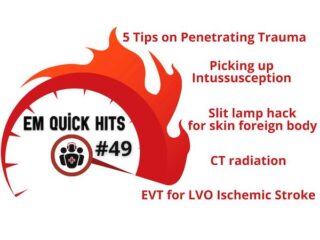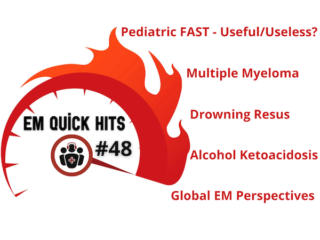EM Quick Hits 49 Stroke Management Update, Intussusception, 5 Penetrating Trauma Tips, Skin Foreign Body Hack, CT Radiation Risk, Emergency Fund
On this month's EM Quick HIts podcast: Anand Swaminathan on EVT for large vessel occlusion strokes, Sarah Reid on picking up intussusception, Andrew Petrosoniak on 5 Penetrating Trauma Tips, Peter Toth on using a slit lamp to manage skin foreign body hack, Nour Khatib and Jonathan Wallace on CT Radiation Risk and Matt Poyner on setting up an emergency fund...










